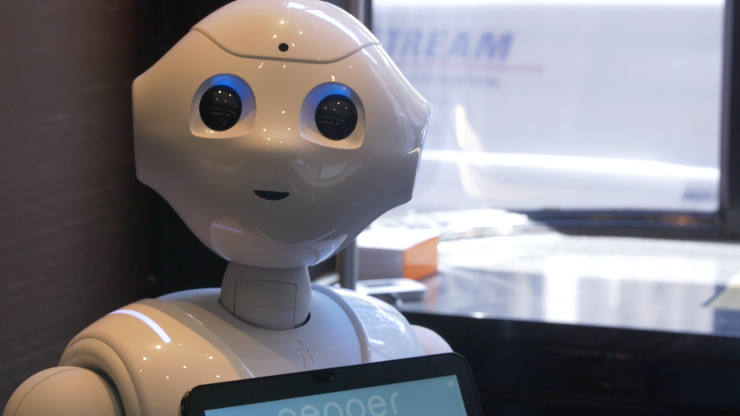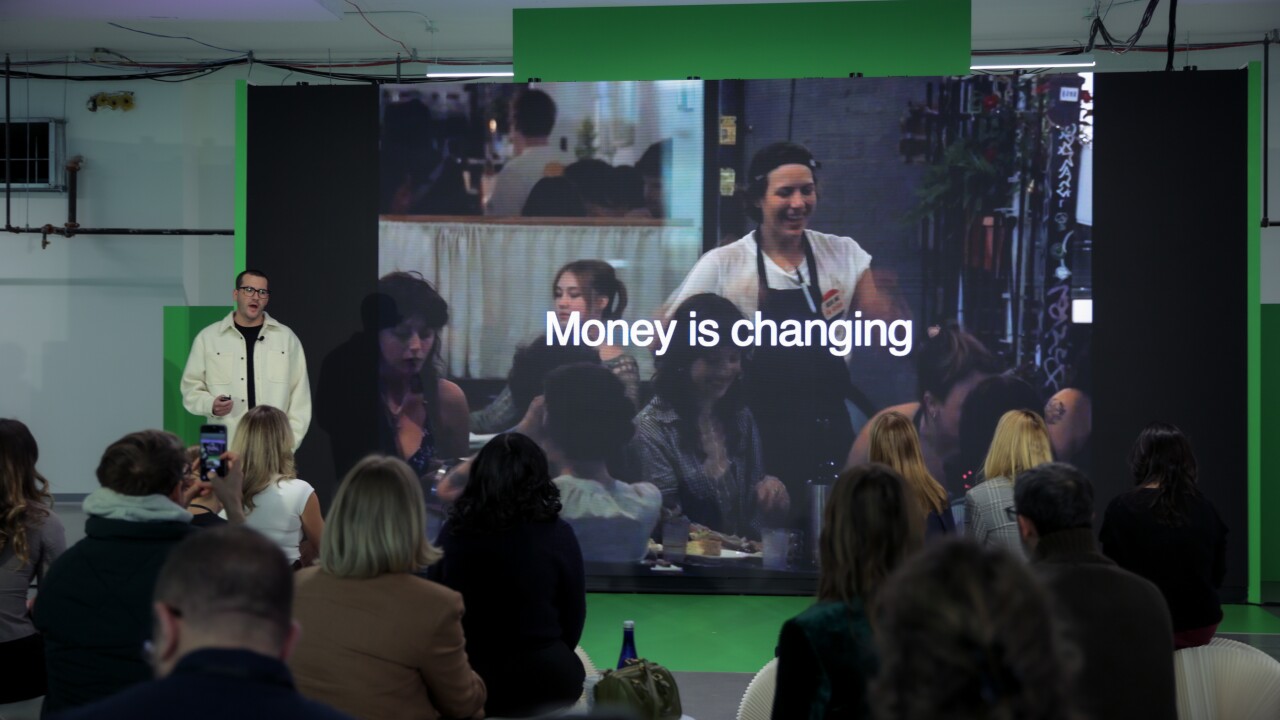HSBC is the first bank in the U.S. to deploy
This might be seen as a step back from two years ago, when Pepper deployed to
"We've explored [payments] a few times. I've seen Peppers with chip readers attached to the tablet. It's perfectly capable of it," said Daniel Schofield, a solutions engineer for SoftBank. "We want the most secure Pepper that we can have, so just to keep it compliant, we're not exploring [payments] until the next model."

That next model, expected in late 2018 or early 2019, will have improved security to address a specific attack that made headlines a few months ago, Schofield explained. Researchers from IOActive found a way to put
That said, there is sophisticated security built into Pepper. It can use biometric facial recognition to identify customers as they approach, much like a human teller might recognize a returning customer. It also has directional microphones that can pick up an ultrasonic signal from a banking app, a method used by one of SoftBank's international clients.
After listening for this ultrasonic authentication, the bank's Pepper robot could provide balance information and budgeting advice, Schofield said.
At HSBC, Pepper functions primarily as a talking display screen on wheels.
"We won't have it ever handle physical paper, whether it be cash or checks or what have you," said Pablo Sanchez, HSBC U.S.'s head of retail banking and wealth management for North America.
"But what we will enable the tablet to do is, if you wanted to go into your own account and use the tablet — almost as if you were using your own tablet — to log onto your account, be able to transfer money, apply for a credit card, those kind of things, it will be able to do [that] for us as we continue to refine it," Sanchez said. "It's already kind of on the docket for the next release of Pepper."
Although Pepper's built-in cameras would be capable of scanning check images, if a user asks Pepper for help with that task, the robot will instead play a short video demonstrating how to deposit checks with the HSBC mobile app.
HSBC wants Pepper to field the simple questions that don't require teller assistance. Much like e-commerce sites have automated chatbots that can answer basic queries but hand the conversation to a live agent for complex interactions, Pepper is meant to intercept people as they enter the branch and quickly provide information.
This also means Pepper is targeted at a very narrow niche: People who prefer to go to a branch for a face-to-face interaction, but are still comfortable enough with technology to talk to a robot instead of a human being.
For this reason, HSBC chose to deploy Pepper at its Fifth Avenue branch in Manhattan, where the average customer is 50% more digitally active than the average HSBC customer, according to Jeremy Balkin, HSBC U.S.'s head of innovation for retail banking and wealth management.
Before deploying Pepper at that location on Tuesday, HSBC conducted a three-month study to evaluate customer and teller feedback. "What we found was 73% of interactions were … what we describe as binary or generic interaction," such as asking about ATM locations, Balkin said.
When a line at the teller's station is five people deep, those queries take up time that could be spent on more demanding tasks, Balkin said.
Pepper can also escalate questions by requesting a branch staffer to come to a customer's aid if it cannot answer all of the customer's questions on its own.
"Pepper was designed … to be able to have every interaction ultimately ending with a human interaction," Balkin said.
Though HSBC and SoftBank had five robots on display for Pepper's debut, going forward it will likely have just one or two in a branch on a given day. Each robot costs the bank $25,000 for a three-year lease that includes software, service and hardware support.





